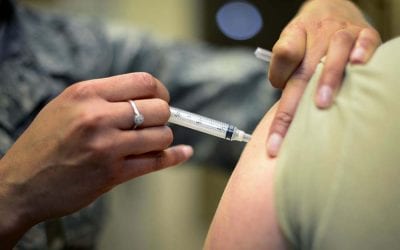Unless you’ve been somewhere with no Internet or newspapers this past week, you’ve likely heard the FAA ban on the use of portable electronic devices (PEDs) below 10,000 feet is about over.
Once each airline establishes its PED plans, procedures and policies, the FAA will allow each, one by one, to permit its passengers to use their smartphones, tablets, computers and other PEDs from the moment they board their flight through deplaning.
There’s little doubt that by the end of the year all the airlines will permit PED use, gate to gate.
There will continue to be some limitations on the use of PEDs in airplanes. Cellular service, both data and voice, will be prohibited during flights, as they are now. Voice communication using PEDs of any kind will continue to be prohibited inflight, as they are now.
Each airline procedure may be slightly different, but generally, the following new rules will be in place regulating PED use aboard commercial flights:
• Once instructed by the flight crew to turn off PED cellular service until landing is complete, when cellphone use has been historically permitted, all PEDs with cellular service must be put into “airplane mode” or it’s equivalent, where cellular service for voice and data is disabled. Or, the devices must be turned off.
• When flights encounter severe weather and/or low-visibility, passengers must comply with flight crew instructions. They may be told to turn their PEDs off and stow them.
• Heavier PEDs, weighing approximately three pounds or more, such as standard laptops, will generally be required to be safely stowed under seats or in overhead bins during takeoff and landing. They will not be permitted to be stowed in seatback pockets, as they aren’t rated to hold items that heavy. Lighter weight PEDs, books and magazines must be hand-held or put in the seat back pocket during the actual takeoff and landing.
With the new PED rules being quickly implemented, don’t be fooled into thinking you’ll also be able to connect to the Internet, gate to gate, by the end of the year. Gogo WIFI, which states it provides about 82 percent of all inflight Internet access in the US, doesn’t currently work below 10,000 feet, the altitude the FAA permitted for the use of such service in the past. So, if you’re flying American, Delta, United, US Airways, and others, it’s Internet access as usual until new technology is available.
I think this is an appropriate FAA ruling, despite its limitation on standard laptop use.
With weight and luggage limits when flying these days, a lack of decent entertainment on many domestic flights and a desire to try to travel lighter, most air travelers eschewed hardback books long ago and few want to carry even paperbacks and magazines these days. Today, more and more air travelers work and bring their entertainment with them on PEDs. Paper is out. Mp3 players (yes, I still see many when I fly), smartphones, tablets and laptops are in.
Personally, I’m never without my smartphone, and for travel entertainment, nothing’s better than a tablet these days. I store several books and quite a few magazine issues, a couple of newspapers, at least 20 movies and even a few interesting games on my tablet for travel. On short trips, I leave my laptop at home and only take my tablet plus a lightweight Bluetooth enabled keyboard to boost my productivity while using the tablet for work.
I like the new regulations. I’ve carefully chosen the books and magazines on my tablet and in the past I haven’t enjoyed waiting in a plane — sometimes for hours — to take off and get to 10,000 feet before getting the okay to turn my tablet on.
Now that we’ll be able to generally use PEDs gate to gate, I’m already hearing complaints that the new rules don’t go nearly far enough. Some travelers want to be able to to turn airplane cabins into phone booths. They want the phone call restriction lifted, pronto.
I’ve been on record for a long time that I don’t want the FAA to lift the ban on any PED voice communication for air passengers while aloft on commercial flights.
Permitting voice communication inflight via passengers’ PEDs doesn’t make sense to me. I can’t image hearing the din of passengers prattling on their cellphones while I’m trapped listening to them for hours. I know how bad it can get from traveling on Amtrak, where I make a beeline to sit in Amtrak’s “quiet car” whenever possible.
The FAA needs to continue to ban cellular phone calls, and the airlines need to continue to ban WIFI calls on Facetime, Skype, etc., via cellphones, tablets, computers and other PEDs, while inflight. Messaging, text chat and email should be more than enough for those who can’t be “out of touch” for even just a few hours.
For those who want voice communication while inflight, I do have a suggestion.
Considering revenue considerations, I don’t think it’s possible on narrow body aircraft, but the airlines might consider installing one or two small, insulated “phone booths,” on wide body aircraft to use for a per minute fee, for those suffering phone withdrawal or who have legitimate emergency call needs.
After many years working in corporate America as a chemical engineer, executive and eventually CFO of a multinational manufacturer, Ned founded a tech consulting company and later restarted NSL Photography, his photography business. Before entering the corporate world, Ned worked as a Public Health Engineer for the Philadelphia Department of Public Health. As a well known corporate, travel and wildlife photographer, Ned travels the world writing about travel and photography, as well as running photography workshops, seminars and photowalks. Visit Ned’s Photography Blog and Galleries.


